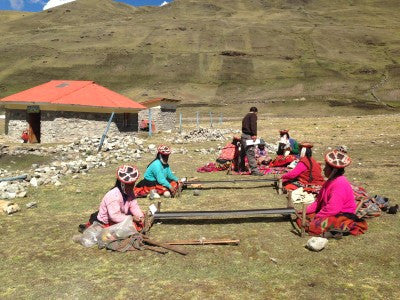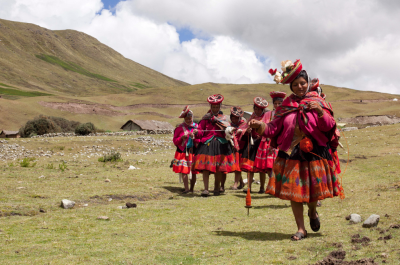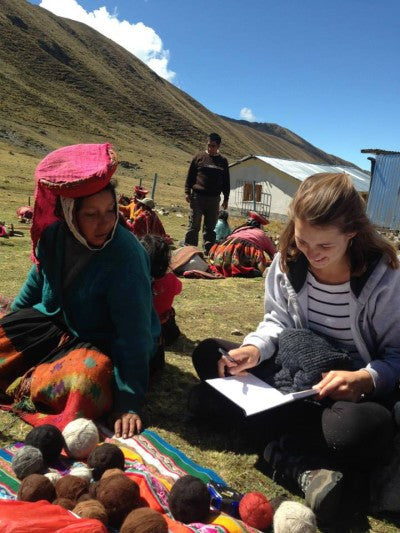This wasn't TOP's first pedido, nor will it be the last. Pedidos are the equivalent to stock ordering- with several distinct differences. For starters, the place of meeting was neither an office nor a boardroom, but rather an open valley nestled between the Andes at 4,200 meters. Women in weaving cooperatives participating in the pedido traveled hours on foot (in rubber sandals mind you) with their weaving supplies on their backs and years of experience in their fingers.
After a brief meeting regarding product order with TOP project coordinator and community liaison, Dana Blair, and weaving instructor and translator Daniel Sonqo, the women got to work spinning, warping, and weaving. For continued improvement, high quality products made in the past were used as examples for the caliber of work expected from the weavers.

Photo by Stephanie Pardi
When the pedido ended, I was able to sit down with Dana Blair, and past TOP project director, Sarah Confer, to hear their reflections on the progress made in the past year. Sarah noted that, "the quality of the women's work, their drive, and leadership incentive has increased". She recalled working with the weaving cooperative in Sodormayo one year ago, when the weavers would ask for Sarah's approval for decision making within the cooperative. One year later, Sarah reflects the women have realized what occurs in the cooperatives is their prerogative, and in this way the idea of being self-directed continues to be reinforced.
Dana Blair adds that this progress has been a matter of building confidence within the communities. She anticipates that Threads will continue to move forward as more orders are placed, and the women continue to increase their independence. According to Dana, these attributes are integral components of becoming sustainable.

Photo by Stephanie Pardi
For TOP, sustainability means that we will continue to connect the world to the tradition of weaving while the women weaving the products will strengthen the cooperatives and continue their craft.
I look forward to see how far Threads of Peru will continue to progress this same time next year.











